Design Workshop: How to Make a Home Sit Lightly on the Land
Piers, cantilevers, towers and more can help minimize a
home’s environmental impact on its site.
Architecture’s relationship to nature — the building site — is something architects and designers must consider in the opening act of any project. Nature is a force that shapes all great works of architecture. The attitude we adopt toward the land has a strong impact on our perception of a place, the way we feel in it, how we arrive at it and where it fits in a broader context.
The site undeniably informs the building shape, how it’s supported, how it meets the earth and how sensibly the design reacts to local conditions. Sitting lightly on the land is a resilient strategy with economic, environmental, aesthetic and efficiency benefits for many building sites. Here’s how to determine if your project should sit lightly on its site.
The site undeniably informs the building shape, how it’s supported, how it meets the earth and how sensibly the design reacts to local conditions. Sitting lightly on the land is a resilient strategy with economic, environmental, aesthetic and efficiency benefits for many building sites. Here’s how to determine if your project should sit lightly on its site.
Why Sit Lightly?
Perhaps the most fitting image of architecture that sits lightly on the land is the tree house. This hotel room in Sweden is perched above the sloping land and sited to take advantage of its unusual position in the forest canopy. The structure hangs from four trees that act as columns.
There is appeal in the idea that natural drainage patterns, soil conditions and native vegetation can coexist with a building above. While this example is extreme, the concept can be applied to more earthly dwellings.
Perhaps the most fitting image of architecture that sits lightly on the land is the tree house. This hotel room in Sweden is perched above the sloping land and sited to take advantage of its unusual position in the forest canopy. The structure hangs from four trees that act as columns.
There is appeal in the idea that natural drainage patterns, soil conditions and native vegetation can coexist with a building above. While this example is extreme, the concept can be applied to more earthly dwellings.
Reasons to adopt a strategy of sitting lightly:
- Deal with uneven topography
- Preserve special site features, such as trees, vegetation and boulders
- Build on a floodplain, where solid foundations aren’t a sustainable option
- Conserve natural site drainage
- Utilize passive cooling in warm climates
- Adapt to a remote site or one with difficult access, where it is harder for equipment to excavate and construct a large foundation
- Reduce costs due to less site and concrete work
- Address rot, mold and insect concerns by eliminating the intersection with the ground
Piers
For homes that sit lightly on the land and minimize the impact on it, we’re most often concerned with how a foundation supports a building. This point of contact with the land can involve great expense, require rigorous planning and cause irreparable damage to the environment.
Traditional foundation types, such as the poured-in-place solid concrete, or slab, foundation, are often the default choice. They’re designed to distribute or spread the structural loads of the building onto the surrounding soil, but they’re expensive and environmentally destructive to build.
For homes that sit lightly on the land and minimize the impact on it, we’re most often concerned with how a foundation supports a building. This point of contact with the land can involve great expense, require rigorous planning and cause irreparable damage to the environment.
Traditional foundation types, such as the poured-in-place solid concrete, or slab, foundation, are often the default choice. They’re designed to distribute or spread the structural loads of the building onto the surrounding soil, but they’re expensive and environmentally destructive to build.
Foundation aesthetics often are driven by necessity and budget rather than beauty. Foundations rely on simplicity and repetition to efficiently transfer the loads of the building to the ground. But a home to sit lightly, a slightly more nuanced approach is required.
Eschewing the most common poured foundation, the designer of this home opted to reveal its foundation support and expose the columns. The building loads are collected into a series of points, and those point loads are transferred to the soil via a pier (or pier and beam) foundation. Set in line with the plane of the exterior wall, the columns allow the home to appear to be delicately floating above the land. The land is of a separate order than the architecture.
Eschewing the most common poured foundation, the designer of this home opted to reveal its foundation support and expose the columns. The building loads are collected into a series of points, and those point loads are transferred to the soil via a pier (or pier and beam) foundation. Set in line with the plane of the exterior wall, the columns allow the home to appear to be delicately floating above the land. The land is of a separate order than the architecture.
Undulating, uneven topography is appropriate for pier foundations, which can be poured to an even height in a grid to support the building above. The pier foundation is inherently efficient, using substantially less concrete than a cast-in-place concrete wall and footing design.
If you’re envisioning the classic camp in the woods with a tilting post foundation and uneven floors, think again. Modern post and pier foundations can be engineered to be every bit as stable as cast-in-place concrete foundations. It’s essential that they’re designed by a qualified professional engineer to ensure that the building loads are properly supported by the earth.
If you’re envisioning the classic camp in the woods with a tilting post foundation and uneven floors, think again. Modern post and pier foundations can be engineered to be every bit as stable as cast-in-place concrete foundations. It’s essential that they’re designed by a qualified professional engineer to ensure that the building loads are properly supported by the earth.
Pier foundations have a lower overall impact on the site than slab foundations. They require less intervention and limit the need for heavy machinery and substantial backfilling. They do require special attention to buried utilities, such as plumbing, power and water infrastructure. This is often why pier foundations have small, targeted points of contact with enclosed poured foundation walls. These provide a place for utility infrastructures to transition from under the ground to the interior space.
Making sure to properly air seal and insulate the floor is especially important with pier foundations to keep pipes from freezing and have a comfortable interior floor.
Making sure to properly air seal and insulate the floor is especially important with pier foundations to keep pipes from freezing and have a comfortable interior floor.
Piers can be made of cast concrete, steel, concrete block, brick or specially treated wood. For sites with poor soils or that are subject to flooding, helical steel piers are a good choice (and are mandated by code in some areas).
Cantilevers
Piers aren’t the only means by which we can minimize the overall excavated footprint on a site. The cantilever permits floor plates to be extended to views and distinct site features without affecting the ground. This strategy works especially well to weave a structure in and around established vegetation — where, for instance, excavation would mean losing a tree.
Piers aren’t the only means by which we can minimize the overall excavated footprint on a site. The cantilever permits floor plates to be extended to views and distinct site features without affecting the ground. This strategy works especially well to weave a structure in and around established vegetation — where, for instance, excavation would mean losing a tree.
The cantilever relies on a heavier base and a spring point for support. But this anchorage can usually be located away from the natural feature the cantilever references, such as this view.
The more space beneath the overhanging upper story, the more likely the space below will remain unaffected and open to light, air and water to support the natural vegetation.
Towers
Another effective design option is to build upward to reduce the impact on the ground. This tower rises from the dense forest understory to greet views and offer access to the natural light above. With two minimal walls supporting the tower, this design relies on structural efficiency to reduce site disturbance.
Another effective design option is to build upward to reduce the impact on the ground. This tower rises from the dense forest understory to greet views and offer access to the natural light above. With two minimal walls supporting the tower, this design relies on structural efficiency to reduce site disturbance.
Borrowing from the cantilever concept, this tower has a minimal footprint and a rotated, cantilevered upper story to capture distant views. The cantilever conserves access to both light and air for the lower stories while affording the desired orientation on the third level and limiting the amount of site work on the ground floor.
Bridges
The bridge is a fitting device to minimize site interference; it brings to mind the engineering feats of the ancient Romans and their aqueducts or modern-day France’s Millau Viaduct. Spanning two heavier foundation elements, a bridge works well to preserve the natural site’s drainage patterns and flora. It concentrates loads at specific points. The foundation anchorages provide discreet locations for introducing buried power and plumbing infrastructure, as discussed previously.
The bridge is a fitting device to minimize site interference; it brings to mind the engineering feats of the ancient Romans and their aqueducts or modern-day France’s Millau Viaduct. Spanning two heavier foundation elements, a bridge works well to preserve the natural site’s drainage patterns and flora. It concentrates loads at specific points. The foundation anchorages provide discreet locations for introducing buried power and plumbing infrastructure, as discussed previously.
Architectural features such as simple site-cast walls can navigate grade differences between areas of the site too. The bridge shown here creates a place for gathering above and below it with a simple, minimal intervention.
Instead of being removed or having their roots disturbed, trees can be integrated into living spaces using the bridge foundation concept.
Hybrids
Any of the previous concepts — bridges, towers, piers, cantilevers — can be combined to deal with especially complicated sites. Our building systems and materials are, for the most part, rectilinear. We’re accustomed to building and living in a planar world, and so it follows that our buildings are shaped by the materials we use. Sitting lightly contrasts horizontal floor planes against the natural land shape. The distinction between the organic and the manufactured lends each a special importance.
Any of the previous concepts — bridges, towers, piers, cantilevers — can be combined to deal with especially complicated sites. Our building systems and materials are, for the most part, rectilinear. We’re accustomed to building and living in a planar world, and so it follows that our buildings are shaped by the materials we use. Sitting lightly contrasts horizontal floor planes against the natural land shape. The distinction between the organic and the manufactured lends each a special importance.
A Smaller Structure
Perhaps the most obvious way for a house to sit lightly on the land is to minimize the size of the building. It can be difficult to separate our desires from our needs, and the process of designing a home intertwines the two. While I would like a two-car garage, a barn and a pool, having lived without them, I know they are desires rather than needs.
Perhaps the most obvious way for a house to sit lightly on the land is to minimize the size of the building. It can be difficult to separate our desires from our needs, and the process of designing a home intertwines the two. While I would like a two-car garage, a barn and a pool, having lived without them, I know they are desires rather than needs.
Homes in the U.S. are responsible for 21 percent of annual energy consumption nationally, according to the U.S. Department of Energy. In that context, building smaller seems a responsibility, not a luxury. When we factor in the benefits — using less raw material (derived from the land) and consuming less energy (also derived from the land) — it’s easy to see why the approach of a home’s sitting lightly on the land can have many and far-reaching benefits.
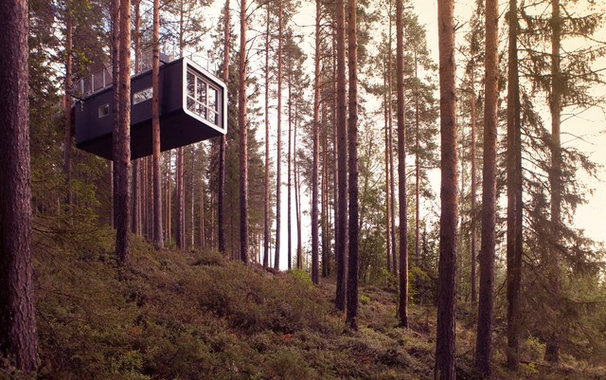
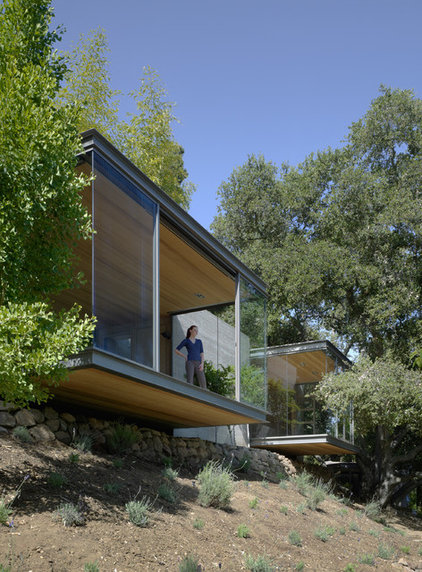


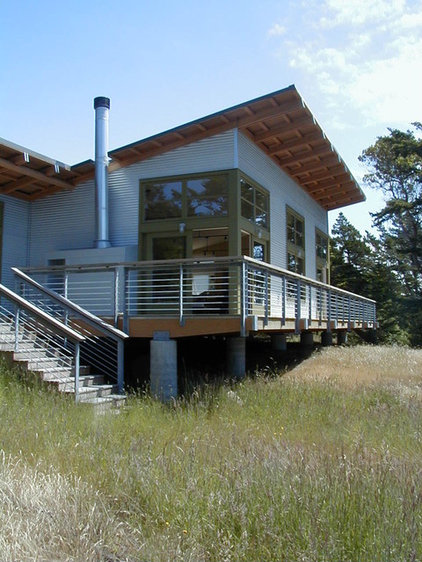
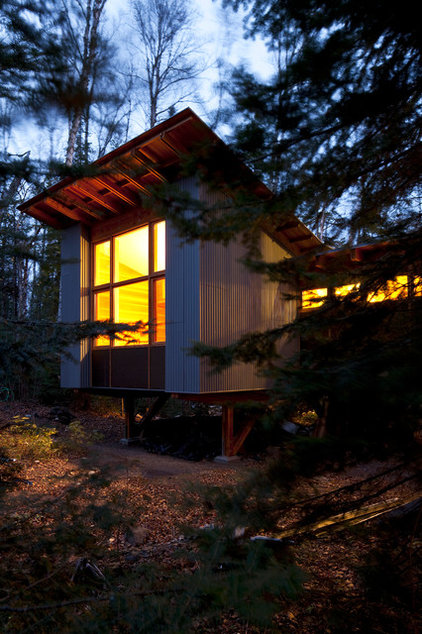

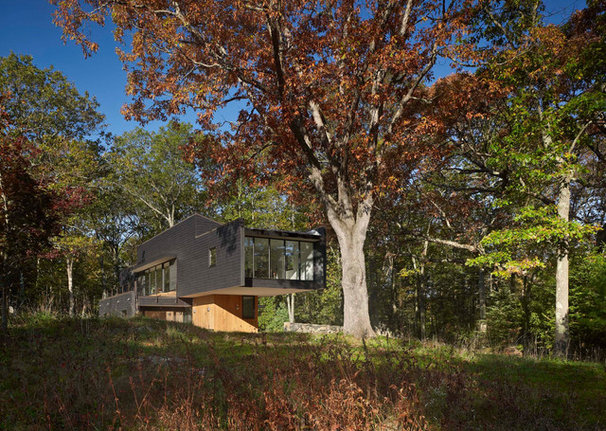
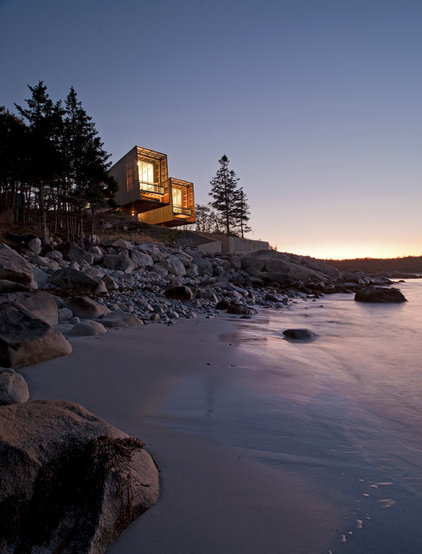
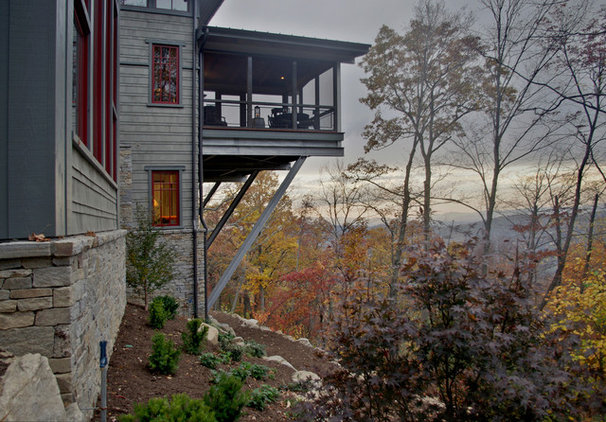
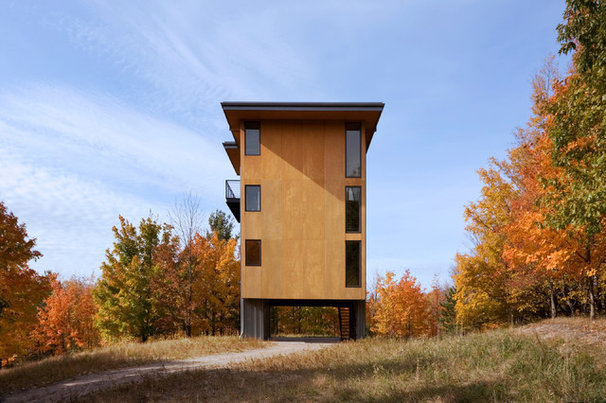
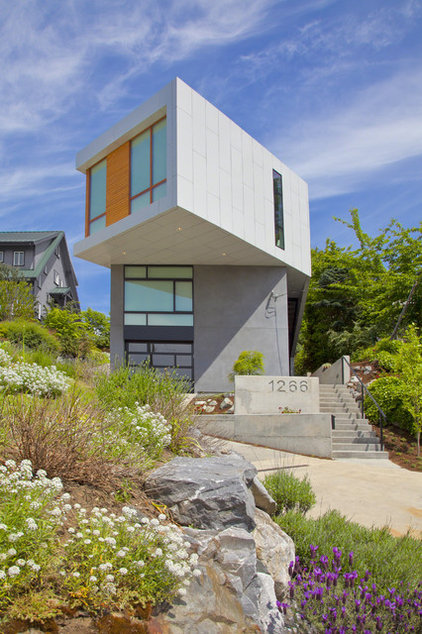
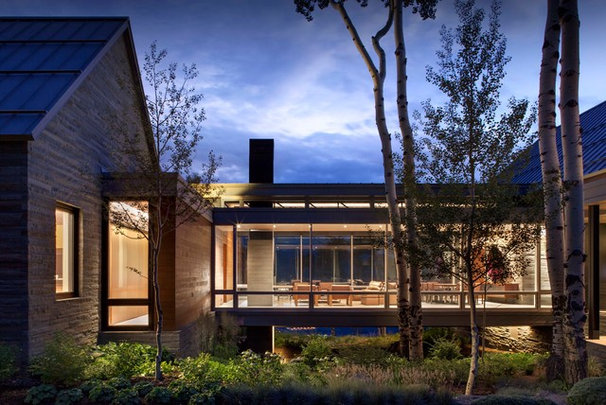
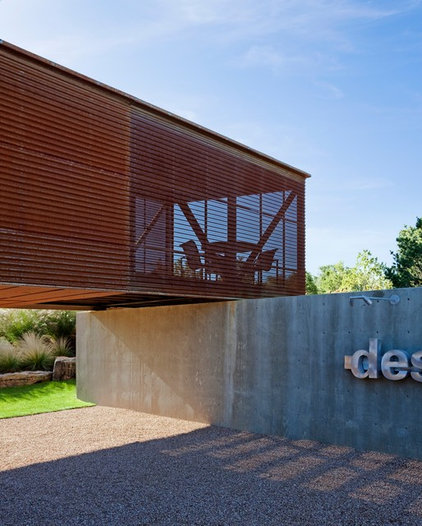
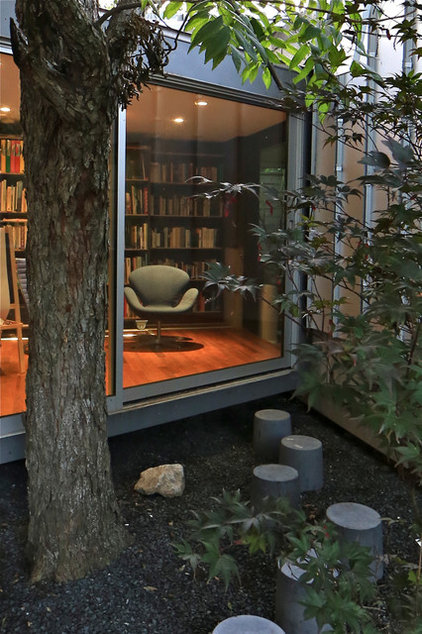
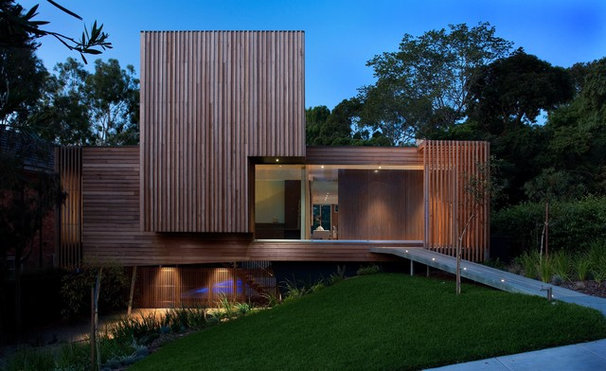
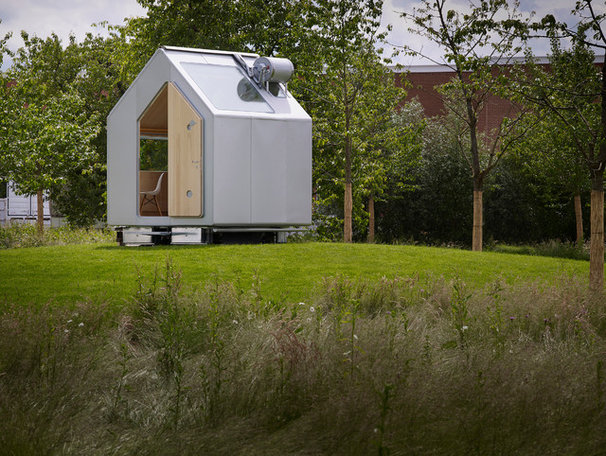
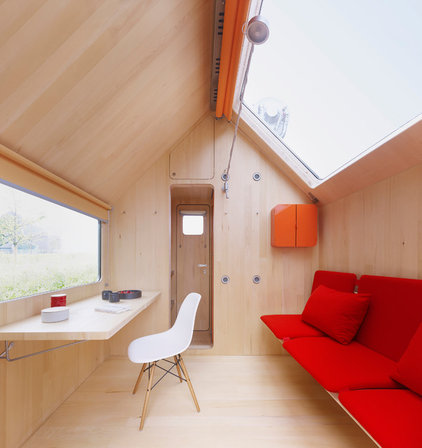
Comments:
Post Your Comment: